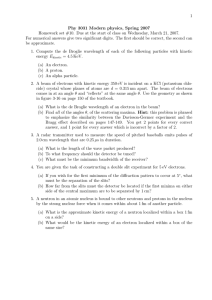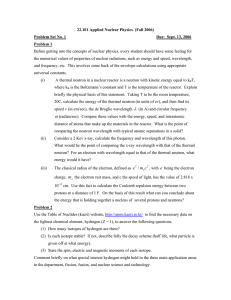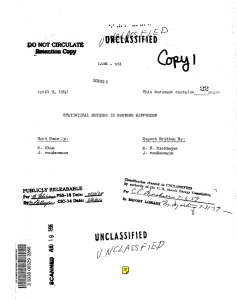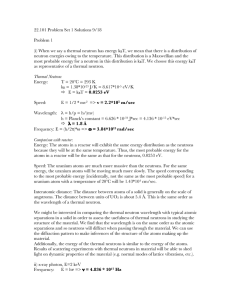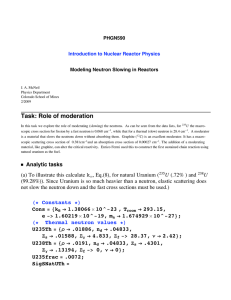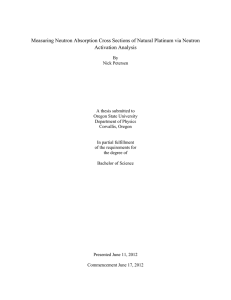22.101 Applied Nuclear Physics (Fall 2004) Problem Set No. 1
advertisement
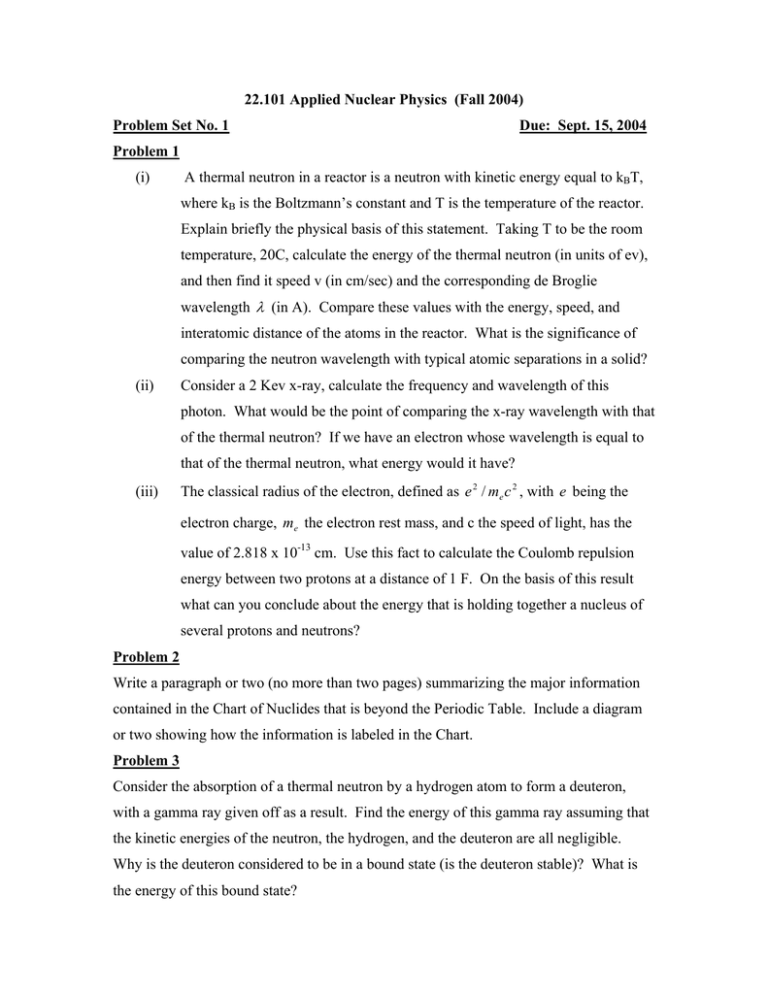
22.101 Applied Nuclear Physics (Fall 2004) Problem Set No. 1 Due: Sept. 15, 2004 Problem 1 (i) A thermal neutron in a reactor is a neutron with kinetic energy equal to kBT, where kB is the Boltzmann’s constant and T is the temperature of the reactor. Explain briefly the physical basis of this statement. Taking T to be the room temperature, 20C, calculate the energy of the thermal neutron (in units of ev), and then find it speed v (in cm/sec) and the corresponding de Broglie wavelength λ (in A). Compare these values with the energy, speed, and interatomic distance of the atoms in the reactor. What is the significance of comparing the neutron wavelength with typical atomic separations in a solid? (ii) Consider a 2 Kev x-ray, calculate the frequency and wavelength of this photon. What would be the point of comparing the x-ray wavelength with that of the thermal neutron? If we have an electron whose wavelength is equal to that of the thermal neutron, what energy would it have? (iii) The classical radius of the electron, defined as e 2 / me c 2 , with e being the electron charge, me the electron rest mass, and c the speed of light, has the value of 2.818 x 10-13 cm. Use this fact to calculate the Coulomb repulsion energy between two protons at a distance of 1 F. On the basis of this result what can you conclude about the energy that is holding together a nucleus of several protons and neutrons? Problem 2 Write a paragraph or two (no more than two pages) summarizing the major information contained in the Chart of Nuclides that is beyond the Periodic Table. Include a diagram or two showing how the information is labeled in the Chart. Problem 3 Consider the absorption of a thermal neutron by a hydrogen atom to form a deuteron, with a gamma ray given off as a result. Find the energy of this gamma ray assuming that the kinetic energies of the neutron, the hydrogen, and the deuteron are all negligible. Why is the deuteron considered to be in a bound state (is the deuteron stable)? What is the energy of this bound state?


